 W
WRoom 40, also known as 40 O.B. was the cryptanalysis section of the British Admiralty during the First World War.
 W
WA113 is an inside joke and Easter egg in media created by alumni of California Institute of the Arts, referring to the classroom used by graphic design and character animation students including John Lasseter, Tim Burton, Michael Peraza, and Brad Bird. Bird first used it for a license plate number in the "Family Dog" episode of Amazing Stories. It has appeared in other Disney movies and almost every Pixar movie.
 W
WThe Amber Room was a chamber decorated in amber panels backed with gold leaf and mirrors, located in the Catherine Palace of Tsarskoye Selo near Saint Petersburg.
 W
WThe Blue Hall is the main hall of the Stockholm City Hall best known as the banquet hall for the annual Nobel Banquet, and also used for state visits, student balls, jubilees and other large events.
 W
WEdmund ("Ted") John Bowen FRS was a British physical chemist.
 W
WThe Cabinet Office Briefing Rooms (COBR) are meeting rooms in the Cabinet Office in London. These rooms are used for committees which co-ordinate the actions of government bodies in response to national or regional crisis, or during overseas events with major implications for the UK. It is popularly referred to as COBRA.
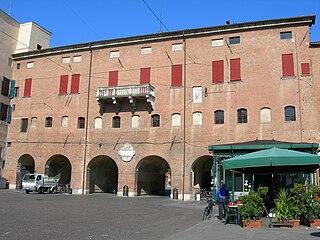 W
WThe Camerini d'alabastro are a range of rooms built over the Via Coperta in Ferrara, northern Italy, linking the Castello Estense to the Palazzo Ducale. They may have included the studiolo or little study of Alfonso I d'Este, Duke of Ferrara.
 W
WThe Clementine Hall, called the Sala Clementina is a hall of the Apostolic Palace near St. Peter's Basilica in Vatican City. It was established in the 16th century by Pope Clement VIII in honor of Pope Clement I, the third successor of St. Peter. The Clementine Hall is covered in Renaissance frescoes and valuable works of art. It is used by the pope as a reception room and in some cases, site of various ceremonies and rituals. The Clementine Hall is the chamber in which the body of the pope lies for private visitation by officials of the Vatican upon death, like that most recently of the funeral of Pope John Paul II. The pope's body is then traditionally moved from the Clementine Hall and ceremonially carried across St. Peter's Square to St. Peter's Basilica or the Basilica of San Giovanni in Laterano.
 W
WThe Divinity School is a medieval building and room in the Perpendicular style in Oxford, England, part of the University of Oxford. Built between 1427 and 1483, it is the oldest surviving purpose-built building for university use, specifically for lectures, oral exams and discussions on theology. It is no longer used for this purpose, although Oxford does offer degrees in Theology and Religion taught by its Faculty of Theology and Religion.
 W
WThe Golden Hall is a banqueting hall in Stockholm City Hall. Measuring 44-metre (144 ft) in length, it received its name when its walls were decorated by mosaics created by the artist Einar Forseth on a proposal by the City Hall architect Ragnar Östberg. The hall is best known as the location of the ball after the annual Nobel Banquet in the City Hall's Blue Hall.
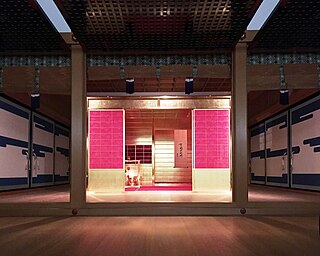 W
WThe Golden Tea Room was a portable gilded chashitsu constructed during the late 16th century Azuchi–Momoyama period for the Japanese regent Lord Toyotomi Hideyoshi's tea ceremonies. The original Golden Tea Room is lost, but a number of reconstructions have been made.
 W
WThe Goldener Saal is a ceremonial room in the Augsburg Town Hall, which is famous for its ceiling paintings, murals, and golden wall decoration. It was finished in 1643 and is one of the most important cultural monuments of the late Renaissance. In 1944 the Town Hall and the Goldener Saal were destroyed by an air raid and were reconstructed after the war.
 W
WThe Hall of Mirrors is a grand Baroque style gallery and one of the most emblematic rooms in the royal Palace of Versailles near Paris, France. The grandiose ensemble of the Hall and its adjoining salons was intended to illustrate the power of the absolutist monarch Louis XIV. Located on the ground floor of the palace's central body, it faces west towards the Palace Gardens for a complete perspective. The Hall of Mirrors has been the scene of events of great historic significance, including the Proclamation of the German Empire and the signing of the Treaty of Versailles.
 W
WIn The Church of Jesus Christ of Latter-day Saints, the Holy of Holies is a room in the Salt Lake Temple wherein the church's president—acting as the Presiding High Priest of the church—enters to act as High Priest of Israel in direct relationship with God, in accordance with the LDS interpretation of the Book of Exodus. Hence, this Holy of Holies in the temple is considered by adherents to be a modern cognate to the inner sanctuary of the Tabernacle and Temple in Jerusalem. The room was also the place where the second anointing ordinance was administered, although, now any room in a temple set apart for this purpose is used.
 W
WThe Jerusalem Chamber is a room in what was formerly the abbot's house of Westminster Abbey. It was added in the fourteenth century. The abbot's house was made the deanery when the monastery was dissolved in 1540.
 W
WThe Long Room is a notable, historic room at Lord's cricket ground, in St John's Wood, London.
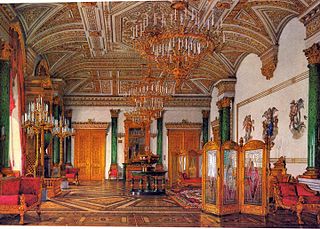 W
WThe Malachite Room of the Winter Palace, St Petersburg, was designed in the late 1830s by the architect Alexander Briullov for use a formal reception room for the Empress Alexandra Fyodorovna, wife of Nicholas I. It replaced the Jasper Room, which was destroyed in the fire of 1837.
 W
WThe Nationality Rooms are a collection of 31 classrooms in the University of Pittsburgh's Cathedral of Learning depicting and donated by the national and ethnic groups that helped build the city of Pittsburgh. The rooms are designated as a Pittsburgh History and Landmarks Foundation historical landmark and are located on the 1st and 3rd floors of the Cathedral of Learning, itself a national historic landmark, on the University of Pittsburgh's main campus in the Oakland neighborhood of Pittsburgh, Pennsylvania, United States. Although of museum caliber, 29 of the 31 rooms are regularly used as functional classrooms that are utilized daily by University of Pittsburgh faculty and students, while the other two are mostly used as display rooms viewed through glass doors and are otherwise utilized primarily for special events and can only be explored via special guided tour. The Nationality Rooms also serve in a vigorous program of intercultural involvement and exchange in which the original organizing committees for the individual rooms remain as participants and includes a program of annual student scholarship to facilitate study abroad. In addition, the Nationality Rooms inspire lectures, seminars, concerts exhibitions, and social events which focus on the various heritages and traditions of the nations represented. The various national, traditional, and religious holidays of the nations represented are celebrated on campus and the rooms are appropriately decorated to reflect these occasions. The Nationality Rooms are available daily for public tours as long as the particular room is not being used for a class or other university function.
 W
WPrince Henry's Room is situated on the first floor at the front of No. 17 Fleet Street, London. The house is one of the few surviving buildings in the City of London dating from before the Great Fire of London in 1666. It is a Grade II* Listed Building.
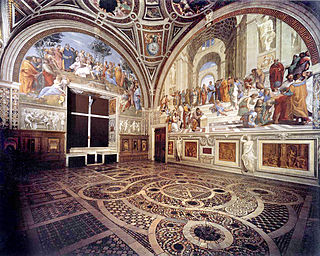 W
WThe four Raphael Rooms form a suite of reception rooms in the Apostolic Palace, now part of the Vatican Museums, in Vatican City. They are famous for their frescoes, painted by Raphael and his workshop. Together with Michelangelo's Sistine Chapel ceiling frescoes, they are the grand fresco sequences that mark the High Renaissance in Rome.
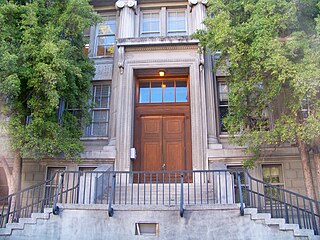 W
WGilman Hall is a building on the campus of the University of California, Berkeley. Room 307 was where Glenn T. Seaborg and his coworkers identified plutonium as a new element on February 23, 1941 and as such, is designated a National Historic Landmark. The building itself is designated a National Historic Chemical Landmark, recognizing the two Nobel Prizes in Chemistry that have resulted from research done in the building.
 W
WRoom 641A is a telecommunication interception facility operated by AT&T for the U.S. National Security Agency, as part of its warrantless surveillance program as authorized by the Patriot Act. The facility commenced operations in 2003 and its purpose was publicly revealed in 2006.
 W
WThe Rotherwas Room is an English Jacobean room currently in the Mead Art Museum, in Amherst College.
 W
WThe Sala Regia is a state hall in the Apostolic Palace in Vatican City.
 W
WThe Salles des Croisades is a set of rooms located in the north wing of the Palace of Versailles.
 W
WThe Shelley Memorial is a memorial to the English poet Percy Bysshe Shelley (1792–1822) at University College, Oxford, England, the college that he briefly attended and from which he was expelled for writing the 1811 pamphlet "The Necessity of Atheism".
 W
WThe Sistine Chapel is a chapel in the Apostolic Palace, the official residence of the pope, in Vatican City. Originally known as the Cappella Magna, the chapel takes its name from Pope Sixtus IV, who restored it between 1473 and 1481. Since that time, the chapel has served as a place of both religious and functionary papal activity. Today, it is the site of the papal conclave, the process by which a new pope is selected. The fame of the Sistine Chapel lies mainly in the frescos that decorate the interior, most particularly the Sistine Chapel ceiling and The Last Judgment by Michelangelo.
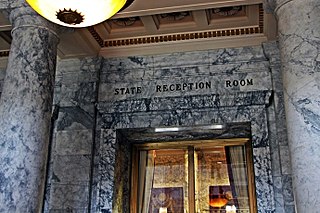 W
WThe State Reception Room is a formal salon on the third floor of the Washington State Capitol in which foreign dignitaries and other official visitors are presented to, and received by, the Governor of Washington. It is notable for having what was once the world's largest single-loom carpet.
 W
WThe Metropolitan Museum of Art has on display a complete studio from the Palazzo ducale di Gubbio. Consisting of period woodwork from late 15th century Italy, the studio was commissioned for Federico da Montefeltro.
 W
WThe Studiolo is a small painting-encrusted barrel-vaulted room in the Palazzo Vecchio, Florence. It was commissioned by Francesco I de' Medici, Grand Duke of Tuscany. It was completed for the duke from 1570-1572, by teams of artists under the supervision of Giorgio Vasari and the scholars Giovanni Batista Adriani and Vincenzo Borghini.
 W
WThe Undercroft at 72/74 High Street in Guildford in Surrey is a medieval undercroft or storage room. It has been described as one of the finest examples of its type in the country. Since 1976 it has been a Grade II* listed building and Scheduled Monument on the List of Historic England.
 W
WThe Tribuna of the Uffizi is an octagonal room in the Uffizi gallery, Florence, Italy. Designed by Bernardo Buontalenti for Francesco I de' Medici for Cosimo I de’ Medici in 1584, the most important antiquities and High Renaissance and Bolognese paintings from the Medici collection were and still are displayed here. In 1737 the Grand Duchess Anna Maria Luisa de' Medici ceded the collection to the Tuscan government, and by the 1770s the Uffizi was the hub for Grand Tourists visiting Florence.
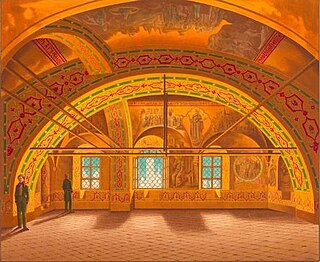 W
WThe Tsarina's Golden Chamber is the official reception room of the Russian tsarinas, where they held formal celebrations of Russian monarchs' weddings, meetings with Russian and foreign clergy, and receptions for relatives of the imperial family and for ladies of the court. It is part of the tsar's palace in the Moscow Kremlin. Золотая Царицына Палата is also the name of the building that houses the chamber, this time using Палата in the sense of "palace".